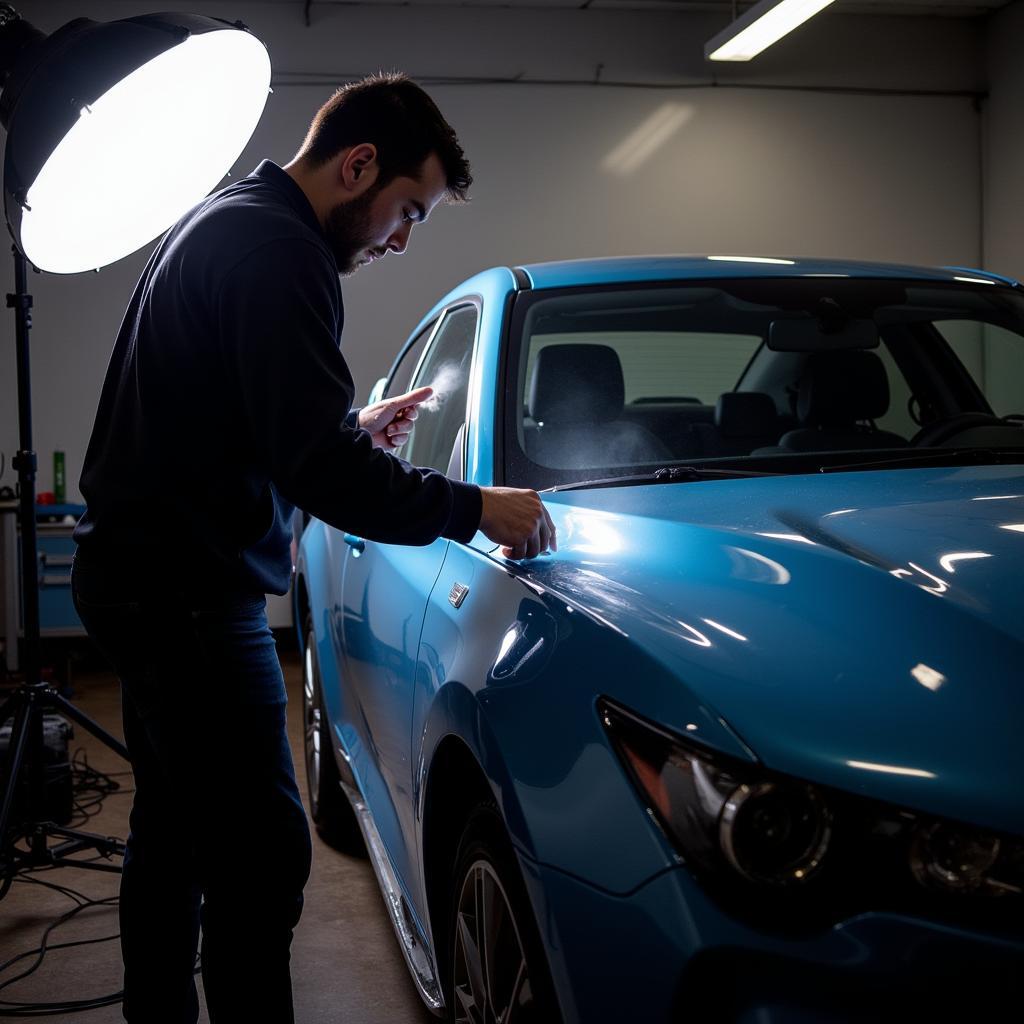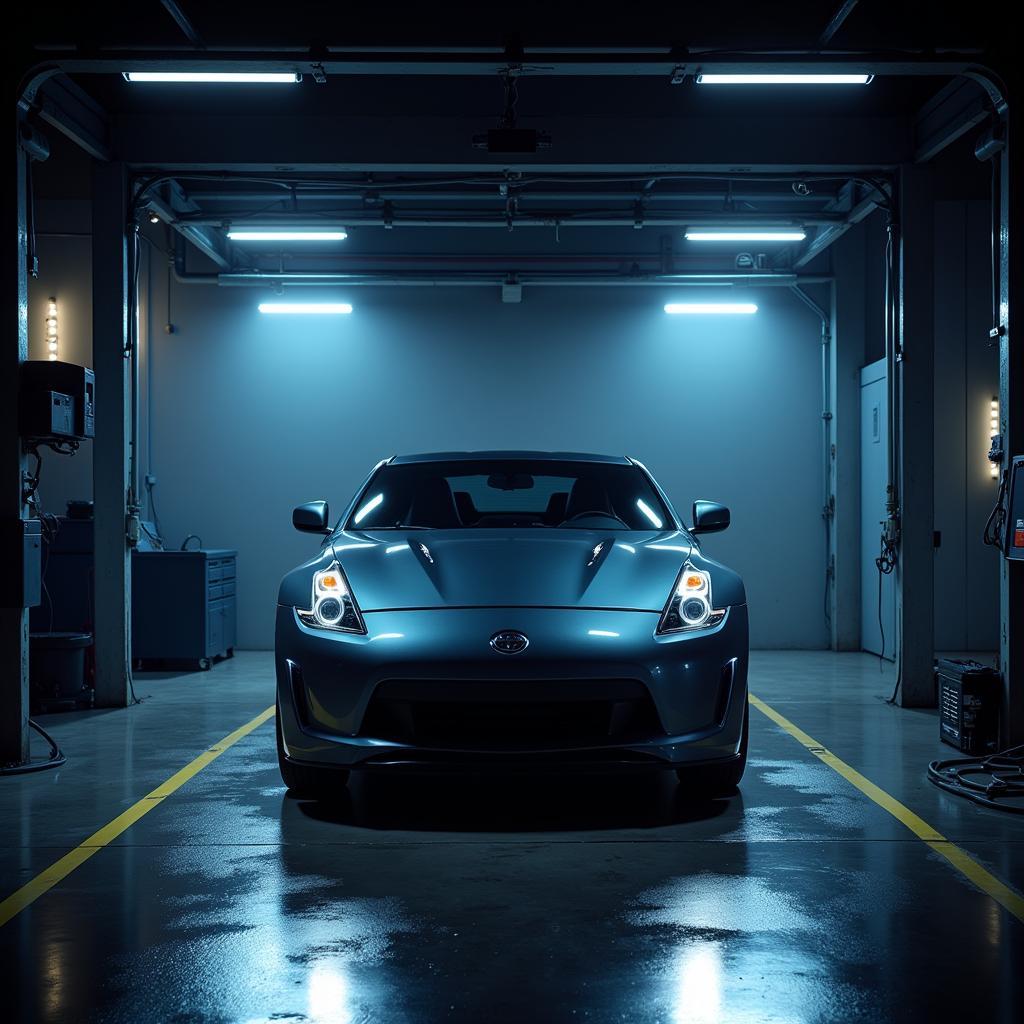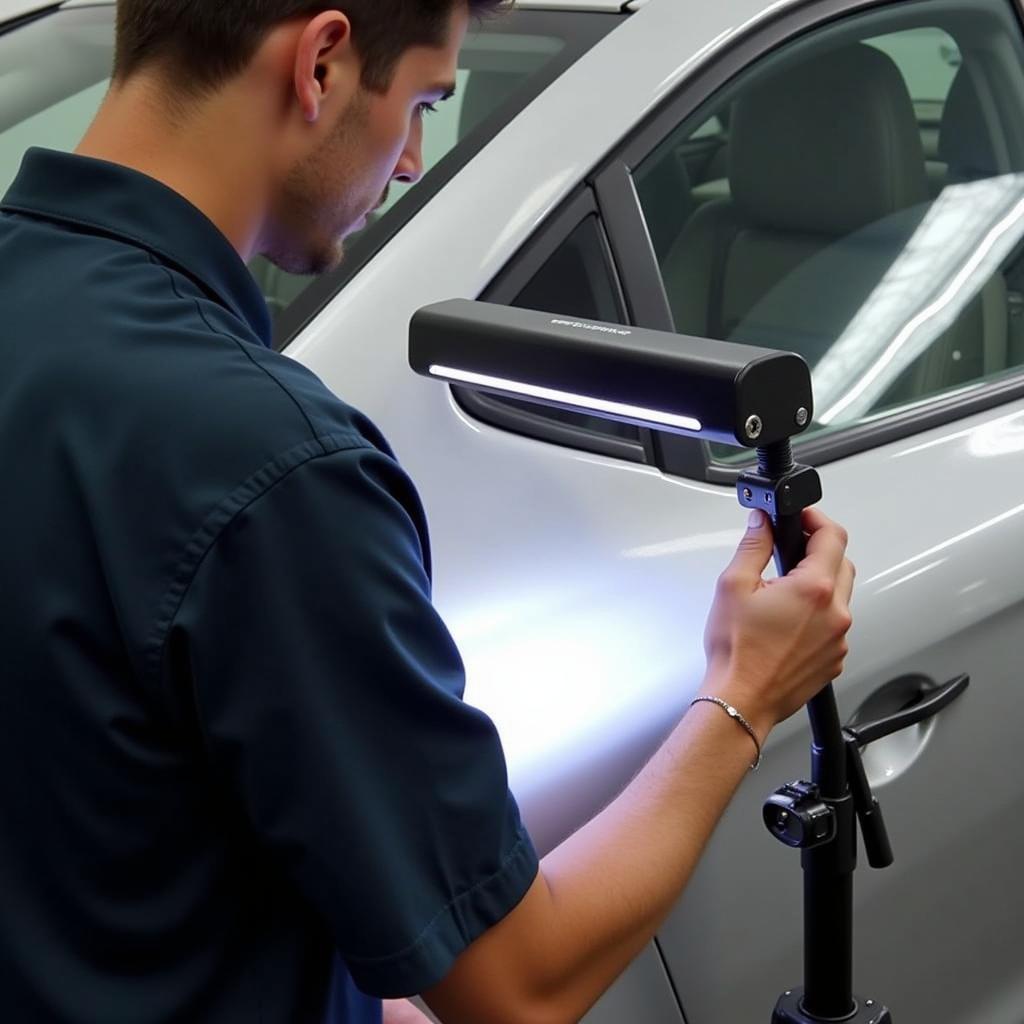Achieving a flawless finish when detailing a car requires more than just top-notch products and techniques. It demands the Best Lighting For Detailing Cars to expose every imperfection hiding on your vehicle’s surface. Whether you’re a seasoned professional or a dedicated DIY enthusiast, understanding the importance of proper lighting can make all the difference in the world.
 Best Lighting for Car Detailing
Best Lighting for Car Detailing
Why Proper Car Detail Lighting is Non-Negotiable
Imagine this: you’ve just spent hours meticulously polishing your car, only to roll it out into the sunlight and discover swirl marks and scratches you completely missed. This frustrating scenario is all too common when relying on inadequate lighting.
Here’s why investing in the best lighting for detailing cars is crucial:
- Revealing Imperfections: Good lighting illuminates even the smallest imperfections like swirl marks, scratches, holograms, and etched water spots that would otherwise remain invisible under normal lighting conditions.
- Accuracy in Application: Whether you’re applying a ceramic coating, wax, or sealant, proper lighting allows for even product distribution, ensuring a smooth, streak-free finish.
- Improved Color Accuracy: Different lighting sources can alter the perceived color of your car’s paint. Daylight-balanced lighting provides the most accurate representation of your car’s true color, allowing for precise paint correction and color matching.
- Enhanced Safety and Efficiency: Properly illuminated work areas reduce eye strain and fatigue, making the detailing process more enjoyable, efficient, and safer.
Types of Lighting for Detailing Cars
Not all lights are created equal when it comes to car detailing. Let’s explore the most popular and effective options available:
1. LED Lighting
LED lights have quickly become the gold standard in the detailing world for numerous reasons. They offer:
- Superior Brightness and Clarity: LEDs emit powerful, bright light that illuminates a wider work area.
- Energy Efficiency: LEDs consume significantly less energy than traditional halogen bulbs, making them a cost-effective and eco-friendly choice.
- Long Lifespan: LEDs have an incredibly long lifespan, lasting thousands of hours, which translates to fewer replacements and less waste.
- Color Temperature Options: LED lights are available in various color temperatures, allowing you to choose the ideal setting for different detailing tasks.
2. Fluorescent Lighting
Fluorescent lights are another popular choice for detailing, known for their:
- Even Light Distribution: Fluorescent tubes provide a diffused, even light that minimizes shadows and glare.
- Affordable Option: Fluorescent lights are generally less expensive to purchase than LEDs.
However, fluorescent lights do have some drawbacks compared to LEDs:
- Lower Brightness: Fluorescent lights are not as bright as LEDs, which can be a disadvantage in larger detailing bays.
- Fragile Nature: Fluorescent tubes are delicate and prone to breaking, requiring careful handling.
3. Halogen Lighting
While halogen lights were once a common sight in detailing shops, they are gradually being phased out due to their:
- Inefficiency: Halogen bulbs generate a significant amount of heat and consume more energy than LEDs or fluorescents.
- Shorter Lifespan: Halogen bulbs have a relatively short lifespan compared to other options.
 Car Detailing Light Setup
Car Detailing Light Setup
Choosing the Best Lighting for Your Needs
When selecting the best lighting for detailing cars, consider the following factors:
1. Color Temperature
Color temperature, measured in Kelvins (K), significantly impacts how colors appear. For detailing, aim for a color temperature of around 5000K to 6500K, which closely resembles natural daylight and provides the most accurate color rendering.
2. Lumens (Brightness)
Lumens measure the total amount of visible light emitted by a light source. The higher the lumens, the brighter the light. For detailing, look for lights with a minimum of 1000 lumens per fixture.
3. Color Rendering Index (CRI)
CRI measures a light source’s ability to accurately reveal the colors of objects compared to natural light. A CRI of 90 or higher is ideal for car detailing, ensuring that you see the true colors of your car’s paint.
4. Light Fixture Design
The design of your light fixtures also plays a role in effective detailing. Consider:
- Portability: Portable light stands or fixtures with wheels are essential for maneuvering around the vehicle and focusing light on specific areas.
- Adjustability: Fixtures with adjustable height and angle settings allow for customized lighting angles and reduce glare.
- Durability: Opt for durable, well-constructed fixtures that can withstand the demands of a detailing environment.
 Portable Car Detailing Light
Portable Car Detailing Light
Setting Up Your Detailing Lights
Proper placement is crucial for maximizing the effectiveness of your detailing lights. Consider these tips:
- Overhead Lighting: Install overhead fixtures to provide general illumination for the entire work area.
- Side Lighting: Position lights on either side of the car to reveal imperfections on the sides and eliminate shadows.
- Mobile Lighting: Utilize portable light stands to target specific areas or panels, especially when performing paint correction or applying coatings.
Conclusion
Investing in the best lighting for detailing cars is an investment in achieving professional-quality results. By illuminating your workspace effectively, you can reveal imperfections, ensure accurate product application, and enhance the overall detailing experience. Whether you’re a seasoned pro or a dedicated enthusiast, the right lighting setup will make a world of difference in achieving that flawless finish you crave.

Leave a Reply